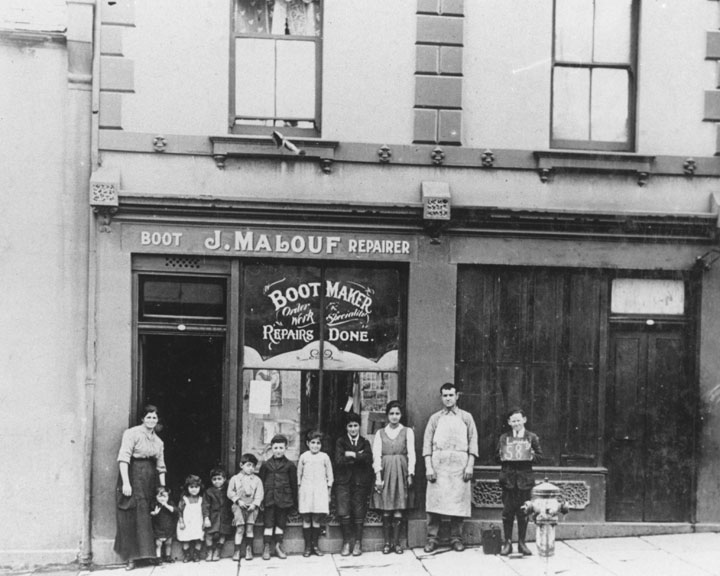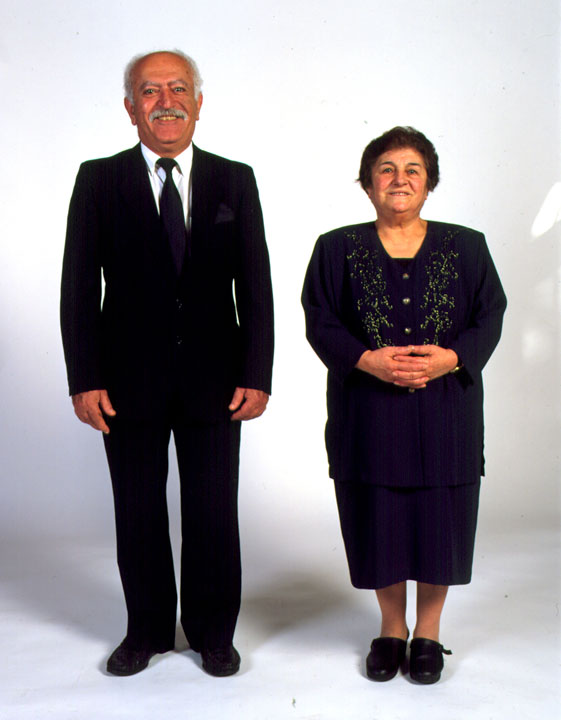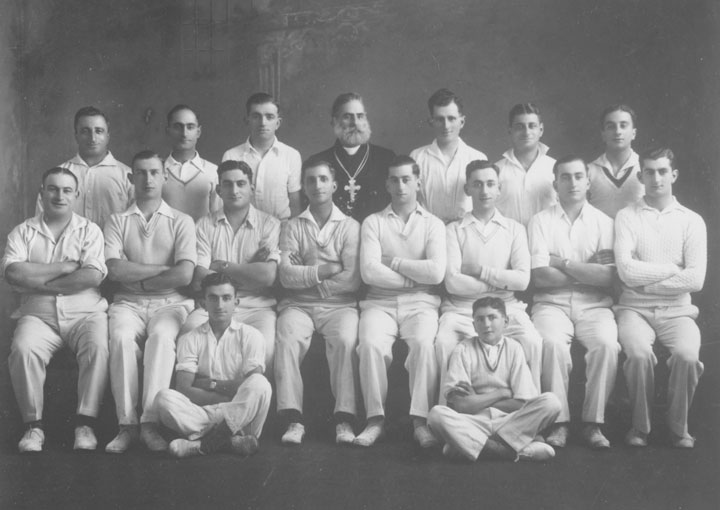Immigration History from Lebanon to Victoria
The earliest Lebanese immigrants to Australia settled in New South Wales in the late nineteenth century, escaping economic hardship and religious and political persecution under the Ottoman Empire.
Victoria began to see immigration from Lebanon from about the 1880s. It is difficult to be accurate about the number of Lebanese settling because immigrants from Lebanon were variously classified as Syrians, Turks or Asians until the 1950s. However, it is known that many early migrants were individual males or small groups of males, hoping to make money quickly and perhaps return home.
Many of the early Lebanon-born settlers in Victoria worked as hawkers, buying their goods in Melbourne and selling them in rural areas. Some later established businesses in retailing, warehousing and manufacturing.
The family was the focus of Lebanese ethnicity, and the community soon grew through chain migration – loved ones reuniting in a new country for a new life.
By the early twentieth century, second-generation Lebanese were contributing to Victorian public life. Many were well-educated and worked in professional occupations. Others became economically prosperous through business ventures.
After World War II, the number of Lebanon-born Victorians increased slowly. In 1954 less than 500 Victorians were Lebanon-born, but changes in migration policy soon saw increasing numbers of Lebanese arrive. Following the Arab-Israeli War of 1967, the number of Lebanon-born Victorians doubled in less than five years to nearly 4,000. After the outbreak of civil war in Lebanon in 1975 the number again doubled, this time to over 10,000.
Today over 16,679 Victorians are Lebanon-born, most still living in Melbourne’s metropolitan area. Nearly half are Christian, and 47% are Muslim. Victorians of Lebanese descent make a rich contribution to Victorian life, making their mark in fields such as politics, fashion, law and hospitality. Victoria’s Premier from 1999-2007, Steve Bracks, is himself of Lebanese descent.
Immigration History from Lebanon (Arabic) to Victoria
إستقر اوائل المهاجرين اللبنانيين في نيو ساوث ويلز في اخر القرن التاسع عشر هرباً من الضائقة الاقتصادية، والاضطهاد الديني والسياسي في ظل حكم الامبراطورية العثمانية.
أما الهجرة الى فيكتوريا من لبنان فقد بدأت في اواخر الثمانينات. ومن الصعوبة اعطاء ارقام دقيقة عن عدد اللبنانيين الذين استقروا فيها لأن المهاجرين من لبنان كانوا يصنّفون حتى الخمسينات، كسوريين، أو كأتراك أو اسيويين. ومن المعروف أن العديد من المهاجرين الأوائل كانوا من الافراد الذكور أو من مجموعات صغيرة من الذكور كانت تأمل في الثراء السريع وربما العودة الى وطنهم.
وقد عمل العديد من المستوطنين الأوائل في فيكتوريا الذين ولدوا في لبنان باعة متجولين، وكانوا يشترون بضائعهم من ملبورن ويبيعونها في الارياف. وقام بعضهم فيما بعد بتأسيس مصالح تجارية، ومخازن ومصانع. وكانت العائلة ترتكز على الاثنية اللبنانية. وسرعان ما نمت الجالية من خلال موجات من الهجرة – وتجمّع شمل الاسرة في البلد الجديد لبدء حياة جديدة.
وبحلول القرن العشرين، ساهم الجيل الثاني من اللبنانيين في الحياة العامة في فيكتوريا. وكان العديد منهم من المتعلمين، وعملوا في وظائف احترافية وازدهرت أوضاع البعض منهم اقتصادياً من خلال المشاريع التجارية.
وبعد الحرب العالمية الثانية، ازداد عدد اللبنانيين المولودين في فيكتوريا تدريجياً. وفي عام 1954 كان في فيكتوريا أقل من 500 من سكان فيكتوريا من المواليد اللبنانيين. غير أن التغييرات التي طرأت على سياسة الهجرة أدت الى زيادة عدد اللبنانيين القادمين الى فيكتوريا.
وعلى إثر الحرب العربية الاسرائيلية عام 1976 تضاعف عدد اللبنانيين المولودين في فيكتوريا في أقل من خمس سنوات الى 4 الاف تقريباً. وبعد اندلاع الحرب الاهلية اللبنانية عام 1975 تضاعف العدد مجدداً ووصل الى أكثر من 10 الاف.
ويوجد اليوم في فيكتوريا أكثر من 15 ألفاً من اللبنانيين المولودين في فيكتوريا لا يزال معظمهم يعيش في ضواحي ملبورن، نصف هؤلاء من المسيحيين 47% منهم من المسلمين. ويقدّم سكان فيكتوريا من اللبنانيين مساهمة قيمة في حياة فيكتوريا وقد تركوا بصماتهم في عدة حقول في السياسة والموضة، والقانون، وقطاع الضيافة. وعلى سبيل المثال، فإن رئيس ولاية فيكتوريا ستيف براكس الذي تولى حكم الولاية منذ عام 1999-2007 هو من أصل لبناني.




